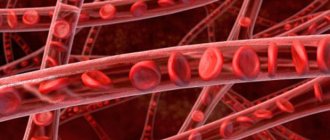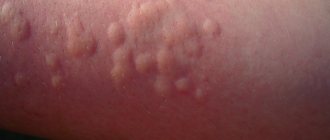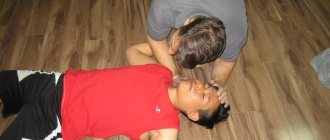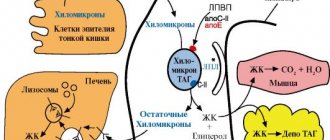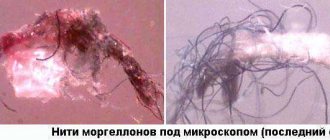Eating low-quality food in some cases leads to botulinum toxin entering the body, which causes serious damage to internal organs. Botulism is a deadly disease . Therefore, it is necessary to remember its main symptoms and features of the clinical picture.
What is botulism
Botulism is a serious infectious disease that is caused by the activity of pathogenic microorganisms. The disease has pronounced severe symptoms. If treatment is not done in a timely manner, complications may develop .
In some cases, the damage is so severe that the person dies. The causative agent of botulism is the bacterium Clostridium botulinum. This is an anaerobic microorganism characterized by mobility. Outwardly it looks like a rod, the length of which does not exceed 9 microns. Has the ability to form disputes.
In living nature, microorganism spores are found in the soil. The source of infection is animal excrement, fish, shellfish . It is in them that the bacterium develops and multiplies.
The microorganism itself does not pose a danger to humans. Poisoning is caused by botulism toxin, which is a waste product of bacteria.
Under what conditions does bacterial activity occur?
In order to understand the mechanism of the disease, it is necessary to understand how the bacterium develops.
Favorable conditions for its existence are considered to be the complete absence of oxygen, as well as an ambient temperature in the range from 20 to 35 degrees. Clostridia is characterized by increased vitality . It does not die in conditions of high concentrations of salts, spices or acids. It can live in spore form for decades. It is not killed by frost or drying. Only long-term boiling for more than half an hour helps to get rid of it.
These properties of the botulism bacillus, which cause food poisoning, make it dangerous to human health. Most often, infection occurs through consumption of poor-quality food, in which the microorganism can settle.
Mechanism of disease development
The pathogenesis of the disease is quite simple. Once in the human body, clostridia begins to lead active life activities. At the same time, it releases a large amount of toxin. Hydrochloric acid, which is contained in the human stomach, has no effect on the microorganism and does not destroy the toxin.
Toxic substances enter the bloodstream and spread throughout the body. They also reach the brain . Therefore, the disease manifests itself in numerous symptoms from all internal organs.
The incubation period of the disease can vary from a couple of hours to a day. How quickly the disease manifests itself depends on how much infection has entered the body. The length of the incubation period may also be affected by the consumption of alcoholic beverages.
The characteristics of the disease indicate that it appears suddenly. At the very beginning, it can easily be confused with simple food poisoning . The rate at which complications develop is astonishing. The poison is instantly absorbed through the intestines into the blood and spreads throughout the body. In this regard, it is necessary to diagnose the problem as early as possible and begin treatment.
What types of disease exist
The disease can be classified according to several parameters. If we talk about the severity of the lesion, the following forms of the disease are distinguished:
- Easy. Most often, only the organs of vision are affected.
- Moderate weight. The toxic effect is on the muscles of the eyes and larynx.
- Heavy. Accompanied by serious deviations in the functioning of internal organs.
The severe form of the lesion is especially dangerous . If untimely or incorrect treatment is used, it can lead to death.
Epidemiology identifies several main types:
- Food botulism. This type is the most common. The disease is associated with eating foods that contain botulinum toxin.
- Wound botulism. Occurs when particles of contaminated soil enter open wounds on the skin. It often occurs in people suffering from drug addiction due to the use of unsterile instruments when injecting. It does not develop as rapidly as the food form. The incubation period can be up to two weeks.
- Infant botulism. It most often occurs in children under 6 months of age when clostridia spores enter the body. This is due to violation of hygiene rules, as well as sanitary standards in the premises where the child lives. Clostridia can enter the body through unwashed hands, house dust, and dirty toys. Honey can be a source of infection, so its use is not recommended at an early age.
- Respiratory botulism. Infection occurs through inhalation of clostridia spores. In order for the process of disease development to begin, there must be quite a lot of spores. This is possible when using bacteriological weapons.
- Of unknown nature. The disease is classified in this group when it is not possible to accurately determine the factors of transmission of the pathogen.
The clinical picture of the disease will depend on its form. Therefore, before developing a treatment program, specialists identify the source of infection .
Video: what are the first symptoms of botulism
Read further:
What to do in case of sausage intoxication at home: treatment methods
What cucumbers can cause poisoning: first aid and consequences
Acetic acid vapor poisoning - symptoms and first aid
Green stool: what does it mean?
How to start a new life without alcohol
Article rating:
( 4 ratings, average: 4.00 out of 5)
Share with friends:
You may also be interested in:
Can baby botulism be caused by honey?
The mechanism of action of botulinum toxin - where it is used, danger
Botulism in mushrooms - signs, treatment methods and prevention
What foods can cause botulism?
Methods of infection and how to prevent the proliferation of clostridia
Most often, the etiology of the disease lies in the consumption of low-quality or processed food . Since clostridia live only in the absence of oxygen, infection occurs from certain foods, for example, canned food prepared at home.
The causes of the disease may also lie in the consumption of seafood. Clostridia feel good in the body of fish and shellfish. The list of dangerous products includes the following:
- Canned mushrooms.
- Any canned food, including vegetables.
- Sausages.
- Dried, salted or smoked fish.
Any food that has not undergone sufficient heat treatment can lead to poisoning . Microorganisms do not affect the color or smell of food in any way.
As bacteria live, they release large amounts of gas, so canned goods infected with botulism can be identified by a swollen lid on the jar.
If you like homemade canned food, then when preparing them you must adhere to some rules:
- Microorganisms do not survive well in conditions of high sugar content . Therefore, jams and preserves must be prepared very sweet. Then they can be considered relatively safe.
- Clostridia cannot live in the presence of oxygen. Therefore, it is safer to salt cucumbers, tomatoes and some other vegetables in tubs rather than in tightly sealed jars.
- Pickled products are best stored at low temperatures . A cellar or refrigerator is best suited for this. When exposed to such conditions for a long time, the toxin is destroyed.
Following these recommendations will allow you to protect yourself and your loved ones from infection. If any canned food makes you question the quality, be sure to throw it away.
First warning signs and symptoms
As soon as the incubation period ends, the first signs of botulism in humans begin to appear. The onset of the disease in adults can be either gradual or acute . It is important not to try to self-medicate, but to immediately contact a specialist before precious time is lost. The following early symptoms are distinguished:
- Feeling of dry mouth.
- Visual impairment. It becomes difficult to read the text, it is not possible to carefully examine nearby objects.
- A grid appears before your eyes.
- Objects may visually appear in two.
- Voice change. He becomes hoarse and rough.
- Speech is impaired.
- There is a feeling of weakness in the muscles.
- The functioning of the intestines is disrupted, constipation appears.
- Problems with urination.
In this case, intoxication is not accompanied by fever or loss of consciousness , as occurs with ordinary food poisoning. There is no loss of sensitivity.
Symptoms in adults
The manifestation of the disease can be different, depending on which system of the body is attacked. Several scenarios are possible:
- Gastroenterological. Toxins primarily affect the digestive system. In this case, pain is observed in the epigastric zone. They are of a cramping nature. Vomiting and diarrhea may occur. Signs of the disease strongly resemble toxic infection. Food has difficulty passing through the esophagus.
- Acute respiratory failure. This option develops if the toxin affects the lungs and respiratory tract. This is the most dangerous condition, as it can lead to asphyxia. Accompanied by the appearance of shortness of breath, tachycardia, cyanosis.
- Ophthalmic. Expressed in visual disturbances. A grid appears before your eyes, all objects are seen in the fog, and it is not possible to clearly identify their contours. An attack of farsightedness may develop.
As the disease progresses, the clinical picture becomes more serious. The development of paresis and paralysis of various muscle groups is possible . During this period, the following symptoms may appear:
- damage to the muscles of the larynx. Accompanied by difficulty swallowing;
- paralysis of facial muscles. The face becomes asymmetrical;
- paresis of the diaphragm. Subsequently, paresis of the diaphragm leads to oxygen starvation of the tissues;
- bradycardia alternating with tachycardia;
- increased blood pressure.
In order for treatment to be successful, it is necessary to diagnose the problem as early as possible. Therefore, if you notice such symptoms, you should immediately seek help from a doctor. Self-medication in this case is especially life-threatening .
Features of the disease in children
If sanitary standards and rules of personal hygiene are violated, bacteria can enter the baby's body. In rare cases, the cause of infection is low-quality milk formula. The disease affects babies under six months of age . A case of botulism in newborns is determined based on the following criteria:
- The child refuses to eat.
- Vision deteriorates. This can be noticed by the way the child lowers the upper eyelids, and squint may appear. The eyes become motionless.
- The child cries a lot and wheezing can be heard.
Such symptoms are a good reason to immediately call an ambulance. This is the only way to avoid serious health consequences.
At a later age, the disease may manifest itself with other symptoms. These include:
- Difficulty swallowing.
- Speech becomes slurred, the child drawls out his words too much, and his voice becomes hoarse.
- An irresistible thirst appears.
- The swallowing reflex decreases.
- As the disease progresses, a decrease in respiratory activity is observed.
If a sufficiently large amount of toxin enters the child’s body, then signs of dyspeptic disorder appear . With a minimal dose of toxic substances, symptoms may be limited to nausea, pain in the abdominal area, and dry mouth.
Accurate diagnosis
If signs of the disease are detected, you should consult a doctor as soon as possible. Only a specialist will help you make an accurate diagnosis and develop competent therapy . Diagnosis of botulism includes the following measures:
- Patient interview. The doctor must identify all factors that could lead to infection. For example, he asks the victim about recent consumption of canned food.
- Visual inspection. The specialist identifies the presence of neurological symptoms, asymmetry of facial muscles, visual acuity, and speech functionality.
- Blood samples are taken for subsequent laboratory testing. This is the only way to reliably determine the presence of toxic substances in the body. The victim's stool and urine are also taken for analysis.
Botulism can be easily confused with polio, encephalitis, and atropine poisoning. Therefore, a wide range of laboratory tests are required.
Only correct and timely diagnosis will make it possible to make the correct diagnosis . The therapy program will be developed based on the severity of the disease and the characteristics of the patient’s body.
Diagnosis and differential diagnosis of botulism
Of decisive importance in laboratory diagnostics is the detection and identification of botulinum toxin in materials taken from the patient, as well as in food products. Blood, gastric lavage, vomit, feces, urine, and in case of death, sectional material are examined. Electromyographic studies reveal specific changes at the synaptic level - the presence of an increment (signal amplification) upon stimulation with electric current.
Differential diagnosis of botulism is carried out with myasthenic bulbar palsy, bulbospinal form of poliomyelitis, poisoning with atropine and nightshade plants rich in this alkaloid, and methyl alcohol.
Therapy for the development of botulism
First aid
As soon as you notice the first signs of botulism, you must immediately call an ambulance. If the injury is serious, hospitalization will be required. But in some cases, the waiting time for a team of doctors to arrive may take longer. At the same time, the loss of precious hours is costly for the patient. The following first aid measures are recommended:
- Gastric lavage. This procedure will remove from the body the remains of contaminated food that have not yet had time to be digested . At home, you can use a solution of soda or salt for this procedure. But the most effective is potassium permanganate diluted in water. The resulting liquid should have a pale pink tint. Make sure that the particles of the substance are completely dissolved. If they enter the stomach in undissolved form, they can cause a burn to the mucous membrane. The victim should drink as much of the prepared solution as possible. After this, vomiting is induced. To do this, it is enough to exert a slight impact on the base of the tongue. This operation is repeated at least three times.
- After gastric lavage, the victim must be given an adsorbent drug. This can be simple activated carbon or one of the modern products, for example, enterosgel, polysorb and others. Such medications will help bind botulinum toxin and prevent it from spreading throughout the body.
- A cleansing enema will help remove toxic substances from the intestines. For this, clean boiled water is used. You can use any laxative.
- If the victim’s condition deteriorates very quickly and symptoms from the respiratory system develop, artificial ventilation will have to be started without waiting for doctors to arrive. To do this, use the “mouth to nose” or “mouth to mouth” technique. A portion of air is blown into the patient's lungs at intervals of 5 seconds. Before this, the airways must be cleared. If cardiac arrest is observed, chest compressions are performed .
First aid measures should never be neglected. Such actions turn out to be very effective. They will help contain the development of the disease and avoid serious consequences for human health.
Therapy technique
In the vast majority of cases, hospitalization of the patient is required. Only timely treatment of botulism in a hospital setting guarantees recovery . Therapy includes the following activities:
- Within one to two days after infection, the patient undergoes gastric lavage. This helps to completely remove the remnants of poisoned food.
- In order to neutralize the effect of the toxin, anti-botulinum serums are used. They are administered intravenously or intramuscularly. Most often, a single administration of the drug is sufficient. But if this turns out to be not enough and the symptoms do not subside, then the medicine is administered again.
- Infusion solutions help remove poison from the body. They are administered intravenously. The most commonly used drugs are rheopolyglucin or hemodez. They cope well with botulinum toxin. The remains of the drug, along with the poison, are excreted in the urine.
- Botulism, like other infectious diseases, is treated with antibiotics. These drugs can destroy the pathogen. In this case, chloramphenicol works well.
- If there is a serious violation of the swallowing function, it will be necessary to install a probe, with the help of which liquid food will be supplied to the victim’s stomach.
- If breathing stops, the patient is connected to a ventilator.
- In case of problems with urination, the installation of a catheter is recommended.
- If the poisoning is severe, then the methodological recommendations include the use of hyperbaric oxygenation.
In order for the treatment to be successful, it is necessary to strictly follow all clinical recommendations of the specialist. After the symptoms subside and the disease subsides, the patient is recommended to undergo a course of physiotherapeutic procedures. As a rule, the duration of treatment is no more than four weeks. Asthenia after botulism can persist for up to six months .
Smart nutrition
One of the mandatory components of the treatment of botulism is proper nutrition. Diet is especially important in severe cases. If the swallowing function is impaired, the victim is fed exclusively liquid food, which is fed directly into the stomach using a tube.
After the symptoms begin to subside, the patient is transferred to a gentle diet. it during the entire treatment and for three weeks after . Experts recommend creating a menu of the following dishes:
- Lean meat and fish. It is better to turn them into minced meat and steam them.
- Vegetable soups.
- Fermented milk products with reduced fat content.
- All kinds of cereals.
- Green tea.
- Fruit and berry compotes without added sugar.
- Boiled eggs, steam omelet.
- Jelly and mousses.
Such nutrition will help provide the body with the necessary substances and not overload it. Any deviations from such a diet can lead to negative consequences .
Traditional methods of recovery after illness
Traditional medicine has developed several of its own remedies for the treatment of botulinum toxin poisoning. But remember that you can use them only after consulting with your doctor and completing a full course of traditional medicine therapy. Such means are allowed to be used only during the rehabilitation period . They will help improve health and eliminate the effects of intoxication.
The use of traditional medicine as the main treatment for botulism is strictly prohibited. This will lead to negative consequences, including death. Do not try to heal yourself; at the first symptoms, consult a doctor immediately.
Among the most effective means to recover from botulinum toxin poisoning are the following:
- Steam a teaspoon of ground cinnamon with a glass of boiling water. Place the mixture on the fire and wait until the boiling process begins. Cook for no more than three minutes. The filtered decoction is taken in a glass before breakfast and after dinner.
- Pour three tablespoons of dried chokeberries into a thermos. Pour in 300 ml of boiling water. Seal tightly and leave for 6 hours. Filter the product and divide it into two equal parts. Drink one part before breakfast, and the second before bed.
- Cranberries are great for recovery. A glass of frozen berries must be steamed with six glasses of boiling water. Then boil the mixture for about 10 minutes. Using a masher, crush the berries and cook for another 5 minutes. The slightly cooled drink is filtered and drunk in small portions throughout the day. The duration of such treatment is at least one and a half weeks.
- Crush three tablespoons of dried rose hips using a masher. Place in a thermos. Pour in three cups of boiling water. Leave for at least six hours, preferably overnight. Drink a glass of this infusion every morning for two weeks.
- Raspberries will help improve your health and speed up the recovery process. Pour four tablespoons of dried berries with half a liter of boiling water. Cover with a lid. After three hours, filter the product. Take 120 ml four times a day. You can add a little honey, but only if the poisoning is not caused by this product.
- Herbal tea will also benefit the body. The collection consists of sage, licorice root, mint, calamus root, flaxseed, and sumoch leaf. All components must be taken in an amount of 100 grams. Add 50 grams of geranium root. Mix all ingredients well. Steam two spoons of the composition with three glasses of boiling water. After an hour, the infusion is ready for use. Drink it three times a day, dividing it into equal parts.
- If complications such as numbness of the limbs or muscle paralysis are observed after an illness, rubbing with special oil will help. To prepare it, pour 100 grams of laurel leaves with half a liter of vegetable oil. For the product to be effective, it is necessary to use fresh leaves. The product must be infused for at least two weeks. This product is used to rub the limbs and lower back.
The use of such drugs is contraindicated in the presence of allergic reactions to individual components . Therefore, consult your doctor before starting treatment.
Treatment of botulism - drugs
Regardless of the duration of the disease, after gastric lavage, all patients are prescribed sorbents (effective use of activated carbon, dioctahedral smectides, hydrolytic lignins, microcrystalline cellulose, etc.).
The only specific treatment for botulism is the administration of antitoxic anti-botulinum horse serums. If the type of toxin is known, the patient is injected with a monovalent serum that acts only on this type of toxin.
In cases where the type of toxin causing the disease is unknown, the patient is administered a mixture of serums (polyvalent serums A, B, and E).
Before administering the serum, a Bezredko test is performed to exclude the development of anaphylactic reactions. Additional desensitization of the patient is also carried out.
For reference. All serums are administered very slowly intravenously (in 200 milliliters of warm (37 degrees) saline). In order to prevent the development of reactions of allergic origin, the patient is administered prednisolone.
Serums are administered in dosages:
- ten thousand IU are anatoxin for toxins A and E;
- five thousand for toxin B.
Jet administration of serums without their preliminary dilution can be used in exceptional cases for health reasons, if drip administration is impossible.
To normalize the acidity of gastric juice (reduce acidity, in order to prevent damage to the mucous membranes of the respiratory tract during aspiration), the following drugs are used:
- ranitidine,
- famotidine,
- omeprazole,
- rabeprazole, etc.
It is also advisable to use drugs that normalize peristalsis and motor activity of the gastrointestinal tract, such as domperidone and metoclopramide.
Attention. Patients with signs of damage to the myocardium by botulinum toxins are prescribed drugs that have a cytoprotective effect on the heart muscle (drugs of trimetazidine, carnitine, meldonium).
Taking into account the frequent development of bacterial complications, treatment of botulism also includes the prescription of antibacterial drugs with a wide range of antimicrobial effects. Recommended use:
- cefuroxime;
- cefotaxime;
- ceftriaxone;
- ceftazidime;
- oxacillin;
- ampicillin;
- inhibitor-protected penicillins (amoxicillin + clavulanic acid).
Important. Aminoglycoside preparations are not used, as they can enhance the muscle relaxant effect of the toxin.
According to indications, patients can be administered immunoglobulin preparations (the use of Octagam and pentaglobin is effective).
In case of hypoxia, hyperbaric oxygen therapy is effective.
In accordance with the test results, the acid-base balance and electrolyte composition of the blood is normalized, the normal hemoglobin level is restored, the blood volume and cardiac output are restored, and fever is eliminated.
It is also indicated to stimulate the discharge of sputum (perform vibration massages), remove stagnant sputum with the help of drainages, and carry out oxygenation. In this case, the breathing mixture used must be heated and humidified.
Additionally, medications can be used:
- B vitamins,
- vitamins A and E,
- ascorbic acid,
- drugs with antioxidant activity.
If necessary, consultations are held with surgeons (for persistent pain syndromes), neurologists (development of cranial nerve paresis, peripheral polyneuropathy), cardiologists (if myocardial damage occurs), resuscitation specialists (addition of respiratory failure in severe disease, as well as the development of multiple organ failure).
What complications may arise
If you attempt to treat botulism on your own and waste precious time, you are likely to develop serious complications. These include:
- Pneumonia. It is caused by impaired respiratory function and a decrease in lung volume. Such complications are possible even with the use of antibacterial therapy.
- Botulinum myositis. This is muscle damage. Pain in the calf muscles is more common .
- Anaphylactic shock. Manifestation of an allergic reaction to the toxin.
- Purulent parotitis.
- Tracheobronchitis of purulent type.
- Sepsis.
- Arrhythmia.
- Intestinal atrophy.
- Hyperphosphatemia.
The consequences of botulism require separate therapy, which is prescribed by a specialist . However, for one and a half months after the end of the main treatment, some symptoms may remain, for example, headache or nasal voice.
Forecast
If anti-botulinum serum enters the human body in a timely manner, the prognosis is favorable. Modern treatment methods have reduced the mortality rate to 10%. The recovery period lasts about three months, after which complete recovery occurs .
If help is not provided in time, the probability of death is quite high. Death is most often associated with paralysis of the muscles of the respiratory system. In the absence of ventilation, about 60% of victims die.
Forecast
In recovering patients, residual effects after paralysis (more than 1-2 months) and asthenic syndrome persist for a long time. Botulism can be complicated by pneumonia, sepsis, and myocarditis.
Those recovering after discharge from the hospital are observed in the absence of complications - 14 days; in case of complicated course:
- in case of myocarditis - a period of incapacity for work of at least 10 days. Treatment by a cardiologist followed by follow-up visits every 6 months for a year with blood tests and ECG;
- in case of residual effects of neurological symptoms - a period of incapacity for work of at least 2 weeks, followed by clinical observation by an infectious disease specialist and a neurologist for a year with examination once every 3 months (ECG, clinical blood test).
Botulism during pregnancy
It is impossible to get rid of botulism without the use of potent medications. This negatively affects the condition of the fetus. Most often, pregnancy is terminated .
If the child survives, he will be born with developmental disabilities and numerous pathologies. In this regard, while expecting a child, a woman needs to carefully monitor her health and be attentive to the products she eats. It is better to avoid smoked products and canned food altogether and follow all preventive measures.
Preventive actions
Damage to the body by botulinum toxin is fraught with serious health consequences. Therefore, it is easier to prevent infection. Prevention of botulism should include the following measures:
- Before consumption, all vegetables and fruits must be thoroughly washed in clean running water. You can rub their skin with a brush. This is especially true for products intended for making home canned food. They must be thoroughly sterilized before they go into the jar.
- When making preparations for the winter, carefully ensure that all instruments are sterilized. The jars and lids must be thoroughly rinsed and steamed over steam or baked in the oven. This will prevent microorganisms from entering the dish.
- When filling jars with the finished product, try to do it so that no air gets inside. The presence of even a small air gap creates a favorable environment for the life of clostridia.
- Using proven home-canned recipes will help you avoid poisoning. Due to the specific storage requirements, experts do not recommend harvesting mushrooms and herbs, or making homemade meat products.
- Never eat food that shows signs of spoilage. If you doubt the quality of a dish, it is better to throw it away.
- Products that will not subsequently undergo heat treatment, such as sausages, must be stored refrigerated. The temperature should not exceed 10 degrees.
- Never buy canned goods secondhand from unknown manufacturers . When purchasing such a product in a store, carefully study the expiration date. If canned food is packaged in iron cans, check their integrity. Never accept dented or deformed cans.
- If you notice that the lid of canned food is swollen, dispose of it without opening it along with the container.
- Strictly adhere to the rules of personal hygiene and sanitary standards. Wet clean your house several times a week and prevent debris from accumulating.
- If you receive an injury that results in an open wound, immediately wash it and treat it with an antiseptic. This is the only way you can prevent infection with clostridia and other dangerous microorganisms.
Disease prevention measures must also be observed at the state level.
They include control over the production of canned products, sausages, meat and fish semi-finished products. Particular attention should be paid to the expiration date and storage conditions of products. Botulism is a dangerous disease that requires competent, timely treatment. Only the use of all therapeutic measures can guarantee recovery. Otherwise, there is a high probability of death. Therefore, do not self-medicate under any circumstances. If you notice symptoms of illness in yourself or your loved ones, immediately call an ambulance. Always remember about preventive measures.


